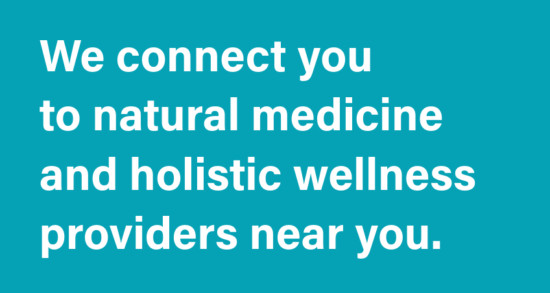Ways to Take Ketamine for Ketamine-Assisted Therapy
Ketamine-assisted therapy (KAT) is becoming an increasingly popular treatment for people dealing with mental health issues like depression, anxiety, PTSD, and chronic pain.
Originally used as an anesthetic, ketamine is now being used in therapy settings to help people manage symptoms that haven't responded well to other treatments.
A key part of ketamine-assisted therapy is how the drug is taken. Different methods can affect how quickly it works, how intense the effects are, and how long they last.
In this article, we'll break down the main ways ketamine is used in therapy and what you should think about when choosing the right option.
What Is Ketamine-Assisted Therapy?
Ketamine-assisted therapy combines the effects of ketamine with guided psychotherapy. When used in a controlled setting, ketamine can help people view their thoughts and emotions differently, which can make it easier to talk about painful memories, process feelings, and shift negative thinking patterns.
One noteworthy advantage of ketamine is that it often works much faster than traditional antidepressants—sometimes providing relief within hours or days. The way ketamine is taken can have a significant impact on the therapy experience.
Primary Methods of Taking Ketamine
There are a few common ways to take ketamine during therapy. Each has its pros, cons, and uses.
1. Intravenous (IV) Infusion
How it works: Ketamine is given directly into a vein using an IV. This method is usually done in a clinic by trained medical staff.
Pros:
- Fast-acting—effects often start within minutes.
- Allows for exact dosing and careful monitoring.
- Often used for severe or treatment-resistant cases.
Cons:
- Requires a clinic visit and medical equipment.
- It involves needles, which some people dislike.
2. Intramuscular (IM) Injection
How it works: Ketamine is injected into a large muscle, usually in the upper arm or thigh.
Pros:
- Quick effect—almost as fast as IV infusions.
- Can be done in a therapy setting with fewer tools.
- Allows for therapist support during sessions.
Cons:
- Still involves a needle.
- Requires in-person visits to a clinic or therapy office.
3. Sublingual Tablets or Lozenges
How it works: The patient places a tablet or lozenge under the tongue and lets it dissolve. Ketamine is then absorbed through the mouth's mucous membranes.
Pros:
- No needles—more comfortable for many people.
- Can sometimes be used at home with professional guidance.
- Good option for ongoing or low-dose therapy.
Cons:
- Takes longer to kick in compared to injections.
- Effects might be milder and not last as long.
- Requires close follow-up and support from a provider.
4. Nasal Spray (Esketamine / Spravato®)
How it works: Esketamine, a type of ketamine, is sprayed into the nose and absorbed through the nasal lining.
Pros:
- FDA-approved for certain types of depression.
- Non-invasive and easy to use.
- Administered under supervision in a clinic.
Cons:
- Only available in specific clinics.
- May cause nasal discomfort or a bitter taste.
How to Choose the Right Method
Picking the best way to take ketamine depends on your symptoms, comfort level, and access to care. Here are some things to think about:
1. Your Medical History and Symptom Severity
- IV or IM methods may be better for more serious cases.
- Sublingual tablets might be enough for people with mild or moderate symptoms.
2. Where and How You'll Take It
- IV and IM methods require you to go to a clinic and be supervised during treatment.
- Some oral options can be taken at home, but only with proper support and follow-up.
3. Your Preferences and Comfort
- Lozenges or nasal spray might be better choices if you're uncomfortable with needles.
- Talk to your provider about the experience you prefer.
Combining Ketamine With Therapy
Ketamine works best when it's paired with psychotherapy. This combination is what makes ketamine-assisted therapy different from just taking the medicine on its own.
Therapy During or After Sessions
- A trained therapist can help you talk through thoughts or emotions that come up while the drug is active.
- Ketamine can make it easier to face tough topics or get "unstuck" in therapy.
Integration After Treatment
- After a session, it's helpful to reflect on the experience. Journaling, meditating, or joining a support group can help.
- This process of making sense of your experience is called "integration;" it helps turn insights into long-term change.
Staying Safe During Treatment
Ketamine is generally safe when used correctly, but it can cause side effects. That's why therapy centers take steps to protect your health during treatment.
Monitoring During Sessions
- If you get IV or IM treatment, staff will watch your vital signs, like blood pressure and heart rate.
- Emergency protocols are in place, though serious issues are rare.
Handling Side Effects
- Common side effects include nausea, dizziness, or confusion.
- Clinics may suggest fasting before your session or giving anti-nausea medicine if needed.
- Staying hydrated and having someone to support you afterward can also help.
Personalizing Your Ketamine Therapy Plan
Every person is different, so ketamine-assisted therapy should be tailored to your needs. Here's how providers make sure your plan works for you:
Finding the Right Dose
- Most providers start with a small dose and adjust based on how you feel.
- Some people may switch between methods—like starting with IV and later using lozenges for ongoing care.
Scheduling Follow-Ups
- After your first few sessions, you might continue with "booster" treatments to keep symptoms under control.
- Regular check-ins with your provider will help track progress and make changes if needed.
Final Thoughts
There are several effective ways to take ketamine in a therapeutic setting. Whether IV infusions, muscle injections, dissolving lozenges, or nasal spray, each method has its place depending on your needs and comfort level.
When paired with professional therapy, ketamine can be a powerful tool for healing. Working closely with a qualified provider ensures the experience is both safe and meaningful. If you're considering this treatment, talk to a healthcare professional about the best method for you.




